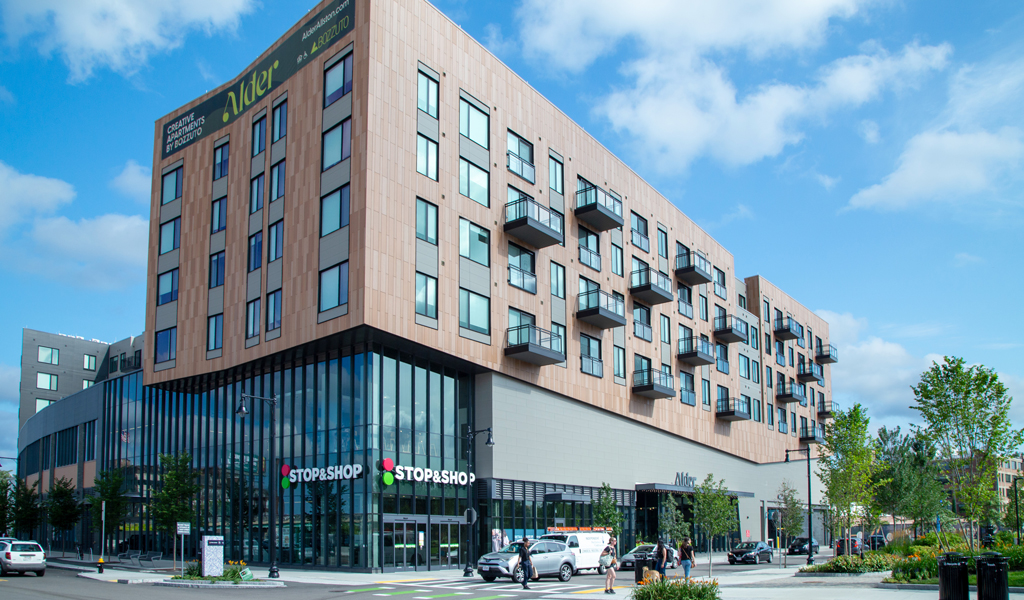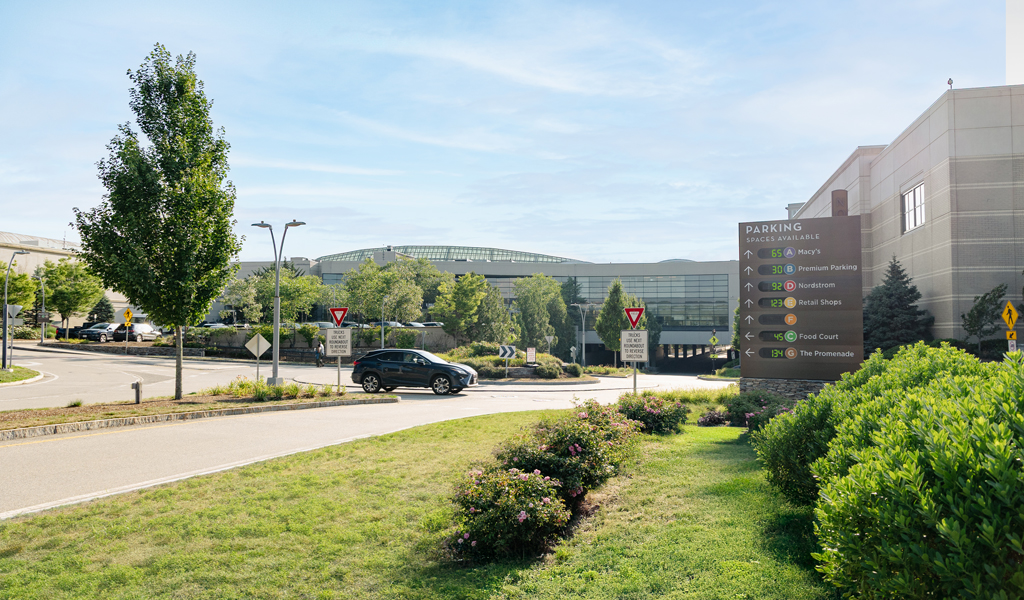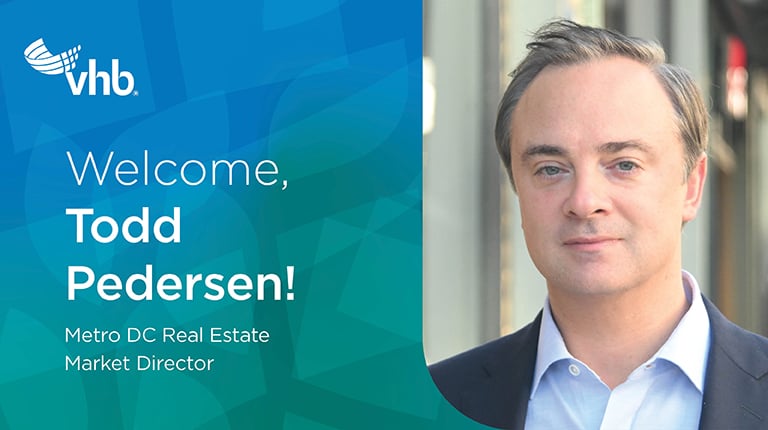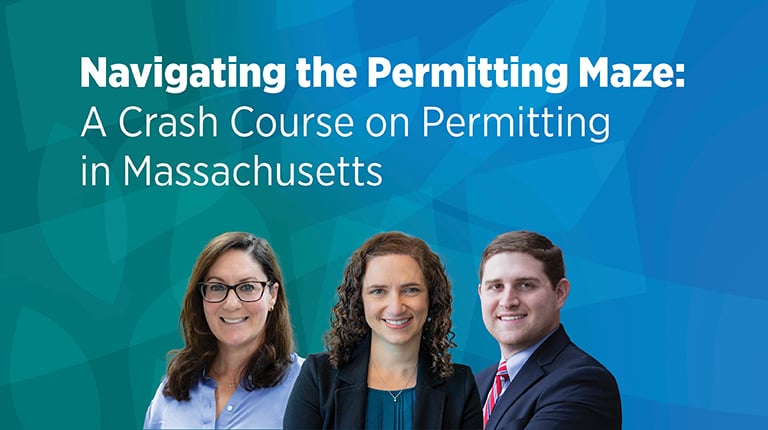
Rick Dupuis, PE, joined VHB more than 30 years ago and collaborates with clients on transformational projects—developing and repositioning complex real estate assets. From regional malls and lifestyle centers to mixed-use environments, he partners with real estate investment trusts, developers, and retailers to transform retail centers into vibrant destinations. Now, as the newly appointed Retail Team Leader, he is working with VHB’s Retail Team on repositioning existing retail centers and community spaces that elevate the user experience. In addition, he is working with retailers on their expansion plans into new markets. We spoke with Rick to learn more about retail trends, and how he works with VHB’s Retail Team to address our clients' challenges.
VHB: The Retail Sector has undergone significant changes in the past five years. Can you talk about key trends and how they are impacting real estate investment trusts (REITs), developers, and retailers?
Rick: Over the past five years, the retail sector has seen a shift toward omni-channel retailing, integrating both online and offline shopping experiences. This shift includes recent trends to reestablish brick and mortar stores—a physical presence to drive sales upward. We've also observed a shift toward experiential retail, where customers seek more than just products—they want experiences. As a result, owners are rethinking the layout and use of their spaces. Many centers are being repositioned with a mix of uses, including residential, office/medical office, hospitality, retail and entertainment—creating walkable communities that function as live, work, and shop destinations. The mix of users creates a more active environment, which drives more foot traffic to the stores, restaurants, and services.
VHB: How is VHB’s Retail team helping to navigate the current challenges facing retail center owners?
Rick: VHB’s Retail Team is focused on innovative solutions that help owners maximize their development potential and value of their sites. Our goal is to turn challenges into opportunities and provide our clients with forward-thinking solutions that cater to present and future needs. Our team is helping owners with site redevelopment and repositioning, infrastructure upgrades, parking and mobility enhancements, and outparcel development. Recently, we’ve helped several clients reposition big box anchors into smaller shops, restaurants, and entertainment spaces. In addition, we’ve helped owners enhance visibility and accessibility by supporting the conversion of enclosed malls into destinations with outward facing shops, giving them more connectivity to the community.
Some owners are focused on adding residential units to existing shopping centers in communities that have strong housing demands. Projects include subdividing land along the outskirts of the property; others include full redevelopment and repositioning to go vertical with residential over retail on the lower levels. Many of our clients are also working with local zoning officials to reduce antiquated parking requirements that would eliminate parking and free up land for redevelopment.
VHB: It’s great to see thriving retail destinations. Can you share some of VHB’s recent work?
Rick: Currently, we are working with several clients to transition their retail centers to mixed-use environments which include residential, medical office, and experiential retail. Allston Yards in Allston, Massachusetts is a great example. We’ve been working with New England Development, Bozzuto and Stop & Shop on transforming an existing suburban style shopping center to a vertically integrated mixed-use transit-oriented community. VHB has been instrumental in moving the project from permitting to construction—developing the critical infrastructure for the phased build out of this 1.2-million-square-foot development that includes retail, residential, office, and open space as well as a new, ultramodern grocery store.

In addition, we’ve been working at Roosevelt Field Mall in Garden City, New York for more than 13 years, helping Simon Property Group reposition this center. We’ve developed the infrastructure to support new tenants such as Seasons 52 and Neiman Marcus as a part of the 150,000-square-foot mall expansion, and we continue to support the development of out-parcels, adding two hotels and medical office space, and studying other locations for potential residential uses and a grocery store. These investments are designed to make certain the mall remains a dynamic, community-oriented destination.
VHB: How do you see technology and innovation shaping retail spaces?
Rick: Technology is reshaping retail spaces by fostering more interactive and personalized customer experiences. Owners and retailers are more agile than they were five years ago. They are utilizing technology and data analytics to tailor offerings and enhance customer engagement. These shifts have helped optimize foot traffic and tenant satisfaction in retail centers.
In addition, owners are focused on convenience and customer engagement. They have installed digital directories and EV charging stations, and they’ve designated pickup spots in parking areas as part of their broader strategy to adapt to evolving customer preferences. At destinations like the Natick Mall, Brookfield Properties has implemented advanced parking solutions that guide visitors more efficiently to available spaces based on tenant proximity. Such innovations are crucial in enhancing operational efficiency and customer satisfaction.

VHB: As retail program clients look to expand on the East Coast, what support does VHB offer to facilitate successful growth and adaptation in this competitive market?
Rick: Many of our retail program clients are focused on increasing market share and customer loyalty in markets on the East Coast. VHB has been working closely with retailers on their expansion strategies and development programs. Our experience spans from single-tenant retail establishments, such as pharmacies, gas stations, convenience stores, and banks, to mixed-use developments featuring anchor tenants like grocery stores.
Retailers rely on VHB to quickly evaluate sites in key markets—optimal locations that align with their demographics and strategic objectives. We understand retail program needs and requirements for the specific retailers as it relates to building/site layout, loading, access, visibility, customer pick up zones and pedestrian circulation. We work with permitting agencies to efficiently navigate projects through the regulatory process, while minimizing potential roadblocks. By leveraging our local teams and insights, VHB offers a seamless and integrated approach to expansion, leveraging our comprehensive services to help our retail clients successfully enter new markets and get open for business.
Learn more about our Retail experience at VHB or connect with Rick via email or LinkedIn.


